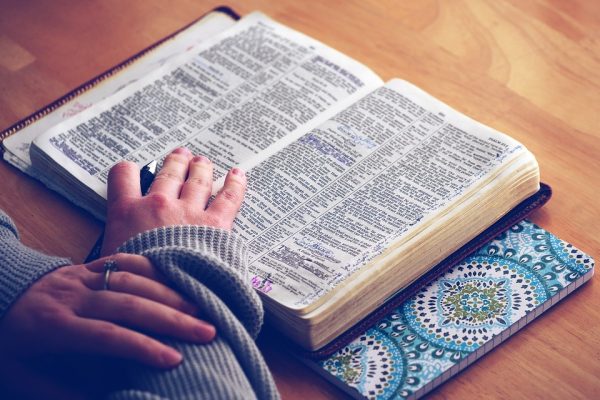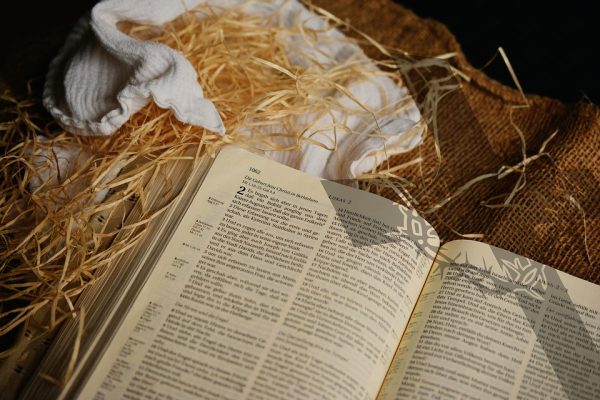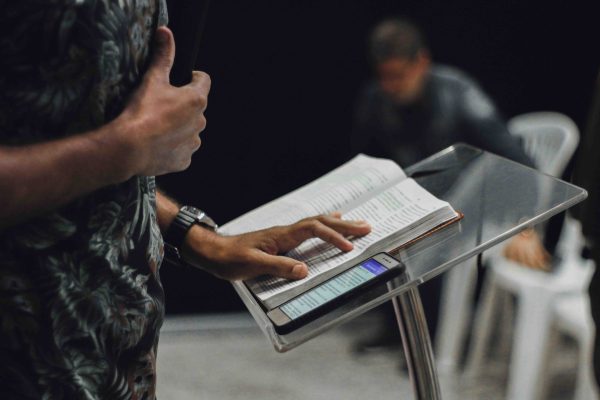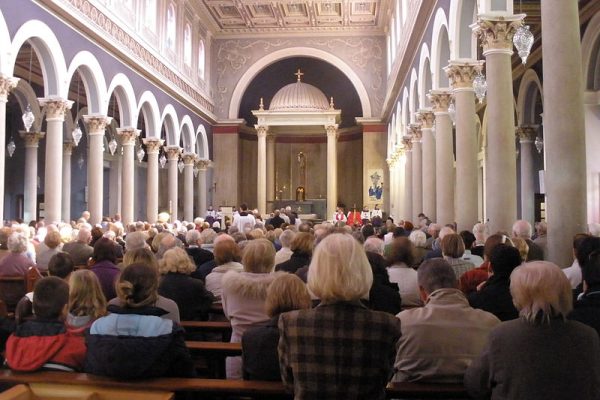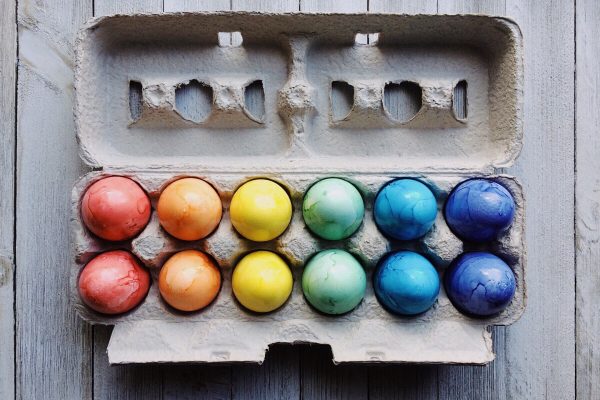Home>Christian Resources>What Is Palm Sunday: Things Christians Should Know

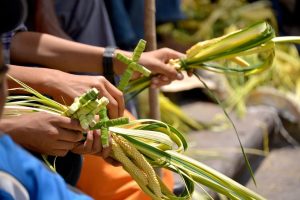
Christian Resources
What Is Palm Sunday: Things Christians Should Know
Modified: January 9, 2024
Learn what is Palm Sunday and understand the historic biblical meaning of this special day. Celebrate Palm Sunday in a more meaningful way this year!
(Many of the links in this article redirect to a specific reviewed product. Your purchase of these products through affiliate links helps to generate commission for Christian.net, at no extra cost. Learn more)
When we hear the words Palm Sunday, the first thing that comes to our minds is the popular scene of Jesus riding on a donkey surrounded by people waving palm branches. Every year, Christians around the world use these symbolic branches to celebrate Palm Sunday. However, some may not know why this day itself is especially special in Christianity. So, what is Palm Sunday and why is it important? It is the final Sunday of the Lent season and it marks the beginning of Holy Week. This day commemorates Jesus Christ’s triumphal entry to Jerusalem, which also fulfills the prophecy stated in the Book of Zechariah, 500 years ago. As we approach Easter Sunday, learn more about the story and the significance of Palm Sunday.
What is Palm Sunday?

Image from Wallpaperflare.com
Also known as Passion Sunday, Palm Sunday is a Christian moveable feast that marks the first day of the week Jesus was condemned to death. Additionally, it also falls on the Sunday before Easter. This event commemorates Jesus’ triumphal arrival to Jerusalem, a few days before the great Passover started. When Jesus entered the city, he was riding on a colt. A large crowd gathered, spread their cloaks, and laid palm branches across the road in front of him as a sign of respect. During Biblical times, this served as a customary practice for people of great respect.
Read more: The Significance Of A Palm Branch
Zechariah 9:9
Rejoice, O people of Zion! Shout in triumph, O people of Jerusalem! Look, your king is coming to you. He is righteous and victorious, yet he is humble, riding on a donkey— riding on a donkey’s colt.
Most of the liturgical churches celebrate Palm Sunday by blessing and distributing palm branches to the congregation. However, other places opt to use substitute branches due to unfavorable climates. Some of the native trees used as alternatives include box, yew, willow, and olive. Because of these alternatives, this remarkable event today, also have other terms such as Yew Sunday, or by the general term Branch Sunday. It is to represent the Palms people waved and scattered in front of Jesus when he arrived in the city of Jerusalem. Some churches reenact this momentous event and give palm branches for the members of the church to participate in the occasion.
Jesus’ Triumphal Entry into Jerusalem

For us to understand what is Palm Sunday, we need to learn the story of how Jesus entered Jerusalem. It was mentioned in all four canonical Gospels: Matthew 21:1-11, Mark 11:1-11, Luke 19:28-44, and John 12:12-19. From Jericho, Jesus and his disciples came to Bethphage. It is a town located on the eastern slope of Mount Olives. He told two of his disciples to go to the village and to bring back a donkey to him. However, interestingly, only the account of Matthew in the Gospel of Matthew is there a mention of a donkey and ner colt.
Matthew 21:2-5
“Go to the village ahead of you, and at once you will find a donkey tied there, with her colt by her. Untie them and bring them to me. If anyone says anything to you, say that the Lord needs them, and he will send them right away.” This took place to fulfill what was spoken through the prophet: “Say to Daughter Zion, ‘See, your king comes to you, gentle and riding on a donkey, and on a colt, the foal of a donkey.’”
This act and request of Jesus focused on the prophecy from Zechariah 9 which mentioned a king on a donkey and a colt. This king is righteous and is to bring salvation. This particular account in the four gospels shows how Jesus’ actions fulfilled the prophet’s words. He indicated that indeed he is the Messiah; the king who brings salvation to us. Furthermore, it was mentioned in Mark 11 and Luke 19 that they also went and stayed in Bethany. Both towns were on the outskirts of Jerusalem.
Matthew 21:8-9
A very large crowd spread their cloaks on the road, while others cut branches from the trees and spread them on the road. The crowds that went ahead of him and those that followed shouted, “Hosanna to the Son of David!”, “Blessed is he who comes in the name of the Lord!”, “Hosanna in the highest heaven!”
Read more: Simple Steps On How To Make A Palm Cross
Mark 11:8-9
Many people spread their cloaks on the road, while others spread branches they had cut in the fields. Those who went ahead and those who followed shouted, “Hosanna!” “Blessed is he who comes in the name of the Lord!”
Jesus was riding on a donkey’s colt when he entered Jerusalem. He intentionally did this to affirm that he was indeed the Messiah prophecized about 500 years ago. As they praised Jesus, any people spread their garments on the road and laid the palm branches they cut from palm trees onto the streets as He rode on the donkey. Many of them hoped for him to go into the temple to teach, while others flocked to Jesus because they heard about his great miracle of raising Lazarus from the dead. They exclaimed ‘Praise God’ because they recognized that Jesus was fulfilling the prophecies from the Old Testament.
Knowing the time of year where many people around Israel would gather in Jerusalem, Jesus chose this specific time to announce that he is the Messiah. Many Jews had gathered in Jerusalem to celebrate the Passover festival. It was a great place where crowds could see him and a perfect way to proclaim his mission. Jesus came not as a warring king, but as a gentle and peaceable King on a donkey’s colt. Jesus’ glory was recognized on earth as he boldly entered Jerusalem as the King of Peace, followed by many who regarded him as a fulfillment of past prophecies. However, the same people of this crowd who praised him turned their backs on him and demanded of Pilate to “Crucify him” five days later.
The Crowd’s Misconception of Jesus’ Mission
Jesus was a well-known prophet at that time because of the great miracles he performed. People who traveled to Jerusalem for the Passover had heard about Jesus and his miracles. For a time, the popular mood was favorable to him. But, these people who were praising God for Jesus’ arrival had a wrong idea about Jesus’ ministry and what he was sent to do. They were blinded to Jesus’ real mission as they expected him to be a political leader who would restore the nation to its former glory that they approved of. When it became clear that Jesus wasn’t going to fulfill their hopes, change the nation to become how they want, people turned against him.
Palm Sunday: Biblical Basis and Symbols

According to the accounts of the canonical Gospels, Jesus’ triumphal entry into Jerusalem took place a week before his resurrection. Interestingly, within the Gospels, only the Book of John mentions the number of days between Palm Sunday and the Passover. John writes that Jesus rode into Jerusalem six days before the Passover (John 12:1).
The symbolism of palm leaves and donkey were captured prophetically from the Old Testament, Zechariah 9. It suggests that Jesus publically made the declaration of being the King of Israel through his actions. Jesus’ statement then led to the anger of the religious leaders. As Jesus rode on a donkey into Jerusalem, the crowd that praised him also sang Psalm 118.
Psalm 118:26
“Blessed is he who comes in the name of the Lord. We bless you from the house of the Lord”.
Donkey
In Eastern tradition, the donkey is an animal of peace, unlike the horse which is the animal of war. It is highly symbolic as riding on a donkey represents the humble and peaceful arrival of someone. It is the opposite of someone who’s riding on a horse arriving on a steed in war. Jesus symbolized his entry as the Prince of Peace.
Palm Branches
Palm branches play a vital role in what is Palm Sunday. Throughout history, it was a custom in many ancient nations to cover the path of someone worthy of the highest honor. In 2 Kings 9:13, Jehu, the son of Jehoshaphat, received the same treatment. The Gospels mentioned that Jesus received this form of honor from the people. Additionally, the Synoptic Gospels (Matthew, Mark, and Luke) described that the large crowd laid down their garments and cut branches on the road. Meanwhile, the Book of John specifies palm fronds.
The palm is also one of the Four Species prescribed for rejoicing (Leviticus 23:40). The Four Species are carried for the Jewish tradition, Sukkot, also known as Feast of Tabernacles. In the Greco-Roman culture, which strongly influenced the Christian tradition, the palm branch is a symbol of victory and triumph. Also, the palm was carried in funeral processions and represented eternal life in ancient Egyptian religion.
Yet, the palm branch is widely recognized as a symbol of peace and victory. Hence, these palm branches are used every Palm Sunday.
Customs and Practices of Christian Churches

Palm Sunday is the sixth Sunday of Lenten Season and the time in which we commemorate the last days of Jesus on earth. On this significant day, people remember Jesus’ sacrificial death on the cross and praise God for his gift of salvation. Many Christians around the world have different ways to observe this momentous event.
Some common practices include reading of an account of Jesus’ entry to Jerusalem, and carrying and waving of palm branches in processionals. Also, besides the blessing of the palm branch, the singing of traditional hymns, and the making of small crosses with palm fronds are part of some traditional Palm Sunday practices.
So, how do different churches celebrate Palm Sunday?
Read more: When Does Lent Start and What Is It?
Eastern and Oriental Christianity
In Orthodox Churches, Palm Sunday is one of the Twelve Great Feasts of the liturgical year. These feasts are the most significant dates on the liturgical calendar. Eight of these are in honor of Jesus Christ, while the four are dedicated to the Virgin Mary. Yet, the greatest of these feasts is the Pascha or Easter. Palm Sunday is also called the “Entry of the Lord into Jerusalem”.
Eastern Orthodox Church and Oriental Orthodoxy observe Lazarus Saturday. It is the day before Palm Sunday. It is the day that celebrates the raising of Lazarus from the dead. Believers usually prepare palm fronds by knotting them to crosses in preparation for the procession during this day. Churches also change the vestments and hangings into a festive color such as the traditional, green. Also, with the Troparion of the Feast comes a short hymn, is part of their customs. It indicates that the resurrection of Lazarus is a prefiguration of Jesus’ Resurrection.
Other churches that don’t have any palm branches available resulted in using pussy willows as a substitute. Although there is no requirement on what kind of branches to use, some Orthodox Christians use olive branches.
The Great Entrance of the Divine Liturgy
Whatever kind of branches were used, these are blessed and distributed together with candles. They give it during the All-Night-Vigil on the Eve of the Feast or before the Divine Liturgy on Sunday morning. The Great Entrance of the Divine Liturgy commemorates “Entry of the Lord into Jerusalem”. As this ceremony is being held, everyone stands, holding their branches and lit candles. After the service, they can take the candles and the branches with them at home. They can keep them in their icon corner as a blessing.
Other Practices
In Russia, the donkey processions took place in different cities, most importantly in Novgorod and Moscow. It is a tradition where the Patriarch of Moscow ride on a “donkey” (a horse draped in white cloth) to represent Jesus. Meanwhile, the Tsar of Russia humbly led the procession on foot. This custom was terminated in the 1720s, but it has been occasionally recreated in the 21st century. Because a donkey is a symbol of peace, it also shows the humility of the person riding it as well as how they are to be humble like Jesus was.
Interestingly, in Oriental Orthodox churches, they distribute the palm fronds at the sanctuary steps of the church. While in India, however, the sanctuary has scattered marigolds and the crowd proceeds through and outside the church.
Western Christianity
During Palm Sunday, Roman Catholics and many Protestant denominations such as Anglican and Lutheran congregations, bless their palm fronds or other substitute branches with an aspergillum. This event is called the ‘blessing of palm’, which is held outside the church building. Then, a solemn procession takes place and often includes the whole congregation.
The Catholic Church and the Episcopal Church observe the blessing of the palm along with the observation of Passion Sunday. It is the focus of the Mass, followed by the palms’ ceremony. The churches save the palms are burned on Shrove Tuesday the following year to make the ashes for Ash Wednesday. Blessed palms are considered sacred in the Catholic Church. Some people turn these palms into small crosses or other items of personal devotion. Yet, people can also return these palm branches to the church. The vestments for Palm Sunday are deep scarlet red, the color of the blood. It symbolizes the ultimate redemptive sacrifice Jesus fulfilled when he entered Jerusalem.
In other churches in other countries such as Pakistan, the people carry palm branches into the church while singing Psalm 24. Other Protestant churches give palm branches to children and then walk in procession inside the church.
Today, many churches officially called this day ‘The Sunday of the Passion: Palm Sunday’ in practice. But it is still termed as Palm Sunday. This is according to the 1928 American Book of Common Prayer, Lutheran liturgies, and calendar. It is to avoid confusion with the penultimate Sunday of Lent, Passion Sunday, in the traditional calendar.
Read more: Christian Symbols of Life and What They Mean
Significance of Palm Sunday
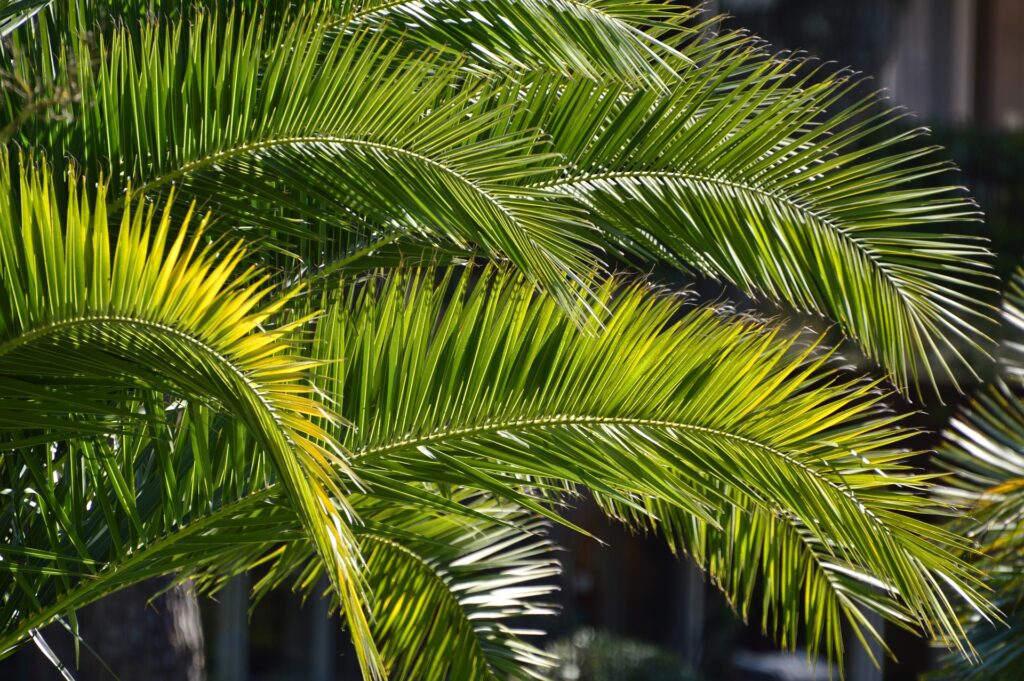
As we understand what is Palm Sunday, let this day remind us to guard ourselves against the superficial acclaim for Jesus. The people had a misconception of Jesus’ sovereignty and his real mission on earth. It was Jesus’ triumphal entry to Jerusalem as Lord of Lords and King of Kings. But, it was also his first step towards his death.
Luke 19:41-42
As he approached Jerusalem and saw the city, he wept over it and said, “If you, even you, had only known on this day what would bring you peace—but now it is hidden from your eyes.
Even though the people were praising him on Palm Sunday, Jesus knew that these same people will betray and crucify him. The crowd hailed Jesus as King. They shouted “Hosanna!”, which means ‘deliver us’ or ‘save us’. At that time, people were waiting for an earthly king to save them. However, God had a different plan to bring true salvation to all who would trust him.
Palm Sunday reminds us that the reign of Jesus is greater than any reign a man could ever conceive. God’s ultimate plan was to send his one and only son to fight the final battle over death. This is the significance of Palm Sunday. Because of Jesus’ sacrifice, we can be set free of death.
A Meaningful Celebration of Palm Sunday

As Easter approaches, let’s solemnly focus on the final days of Jesus’ life. These symbolic events remind us of God’s salvation plan for us. He gave his Son, Jesus Christ, for our salvation because of his unconditional love for us. He offers us a gift of salvation and eternal life through Jesus (Romans 6:23). This Easter, let God direct our thoughts and attention towards Jesus Christ and what he has done for us.
The Gospels serve as a reminder that Jesus is the King of Peace. Jesus entered Jerusalem riding on a donkey with peaceful intentions and was welcomed by a crowd who praised him. But, though the crowd heard his teaching, they still had a narrow understanding of God’s mission. As we learn the story of Jesus’ triumphal entry in Jerusalem, let’s look at palm branches as not just another tree branch but a representation of God’s goodness and victory. It is a symbol of the final victory he fulfilled over death. It gives us a sign of what is Palm Sunday.
Let this season strengthen our faith and deepen our relationship with God. Let’s consecrate ourselves to worship God. We should thank Him for the gift of salvation and celebrate the power of Resurrection. In Him alone, we can find a new life and a renewed spirit.


